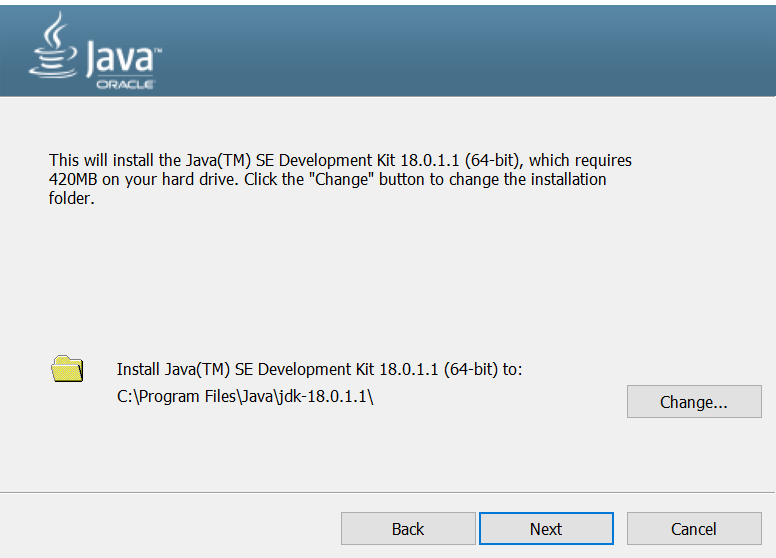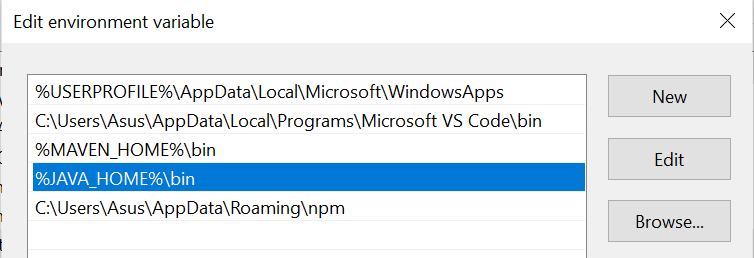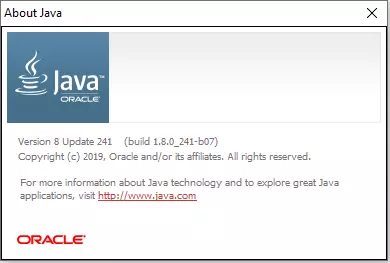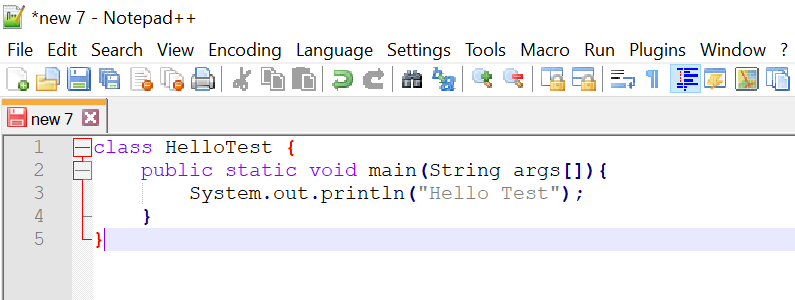How To Install Java on Windows 10 Step by Step
In this short tutorial, we’re going to take a close look at how to install Java on Windows 10.
We’ll first start with a little insight into how to download Java. Then, we’ll explain how to install it on Windows 10. Then, we’re going to see how to properly set JAVA_HOME environment variable.
Lastly, we’ll highlight different ways to check Java and JDK versions on Windows 10.
So, let’s get started
Download Java for Windows 10
In this section, we’re going to cover in-depth all the steps required to download Java for Windows 10.
As a matter of fact, downloading Java is a piece of cake. It’s just a matter of a few clicks and simple one-time steps.
First, we need to visit the official oracle download page and choose the right release for the Java SE Platform. At this point in time, the latest version is Java 18.
Secondarily, we need to click on the Windows tab.
Bear in mind that Oracle has dropped the support for 32 bit systems. As a result, we can use Java SE only in 64 bit machines.
Oracle offers three options to install Java on Windows. We can use a compressed archive file, a x64 Installer or a x64 MSI Installer.
For instance, let’s choose the x64 Installer option:

Before Java 17, we had to accept the Oracle Technology Network License Agreement to proceed to the next step, which is not the case for Java 18
Lastly, a simple click on the download link will do the job. Easy, right?
Install Java on Windows 10
Now that we downloaded Java for Windows 10, let’s see how to install it.
Basically, the process of installing Java on Windows 10 is pretty easy and simple.
In general, we don’t need to change anything during the installation, we can go with the default settings and follow the suggested instructions.
Firstly, we need to double click on the downloaded installer file to start the installation process:

Secondarily, we click Next to continue:

Note that, “C:\Program Files\Java\” is the default Java installation folder! However, we can always change it if we want that.
Then, we keep hitting Next until the installation is complete:

Finally, we close the installer wizard to complete the installation.
Set Java Path in Windows 10
Now that we have installed Java with success, it’s time to proceed to the next step.
In this short chapter, we’re going to dive deep into how to set JAVA_HOME environment variable on Windows 10.
Add JAVA_HOME
The basic idea behind setting the Java Path is to make all the Java commands like java and javac accessible from everywhere. That way, we can run Java programs from anywhere.
Please note that, JAVA_HOME should point to the JDK not the JRE.
First, let’s open the Advanced System Settings. To do that, we just need to press Windows key + Pause Key.
Alternatively, we can type View advanced system settings in the search box.

Once the System Properties window is opened, we click on Environment Variables:

Secondarily, we click on the New button to create a new environment variable with JAVA_HOME as name and the path to the JDK directory as value:

As we can see, the JAVA_HOME environment variable points to the JDK folder which C:\Program Files\Java\jdk-18.0.1.1 is in our case.
Append JAVA_HOME to PATH
Next, we need to update the PATH variable by adding a new entry for %JAVA_HOME\bin%:

Finally, we can click OK to save and apply the changes.
That’s all we can say about downloading and installing java on windows 10. Now, we’re ready to write our first Java program.
Check Java Version on Windows 10
There are multiple ways that we can use to check Java version on Windows 10. The most obvious and basic way is to use the terminal.
Firstly, press Win+R and type cmd to open the Command Prompt. After that, type java -version and press Enter:
C:\Users\Asus>java -version
java 18.0.1.1 2022-04-22
Java(TM) SE Runtime Environment (build 18.0.1.1+2-6)
Java HotSpot(TM) 64-Bit Server VM (build 18.0.1.1+2-6, mixed mode, sharing)
C:\Users\Asus>
The output means that Java is properly installed on our operating system.
Alternatively, we can type “Java” in the search box and click on “About Java”:

Please bear in mind that multiple versions of JDK can be installed on the same on Windows 10 machine. So, it’s important to make sure the JAVA_HOME environment variable points to the right JDK release.
Let’s open a new command prompt and type:
C:\Users\Asus>echo %JAVA_HOME%
C:\Program Files\Java\jdk-18.0.1.1
C:\Users\Asus>
As show above, the environment variable JAVA_HOME points to the directory of the lastest JDK version.
We can also use javac -version to verify the version of the installed JDK:
C:\Users\Asus>javac -version
javac 18.0.1.1
C:\Users\Asus>
Another important thing to note here is that the JDK version can be different from the JRE version on the same machine.
Please keep in mind that we need always to check for new Java updates and install them to keep our machines up-to-date with the latest releases.
In case you want to check how to enable Java on Chrome and other browsers, feel free to take a look at this article: https://devwithus.com/enable-java-chrome/
Write First Java Program
Now that we installed Java, let’s see how to create our first Java program.
To do so, let’s open an IDE or a text editor of your choice, for example, Notepad++, and create a new file (ctrl+n).
Next, we need to append the following code in our newely created file:
class HelloTest {
public static void main(String args[]){
System.out.println("Hello Test");
}
}

Now, let’s save our file anywhere we want under the name: HelloTest.java
In order to execute our Java program, we need to compile it first. So, let’s open a terminal and type:
C:\Users\Asus\Workspace\Java>javac HelloTest.java
C:\Users\Asus\Workspace\Java>dir
Directory of C:\Users\Asus\Workspace\Java
06/19/2022 02:26 PM 422 HelloTest.class
06/19/2022 02:25 PM 103 HelloTest.java
2 File(s) 525 bytes
2 Dir(s) 31,034,630,144 bytes free

As we can see, javac creates a new file with the name HelloTest.class. This means that the compilation phase is done with success.
Lastly, let’s run our Java program using the java command:
C:\Users\Asus\OneDrive\Bureau\Java>java HelloTest
Hello Test
C:\Users\Asus\OneDrive\Bureau\Java>
Please bear in mind that we don’t need to specify the extension when executing a Java file.
Conclusion
In this article, we’ve explained how to tackle the challenge of downloading and installing Java on Windows 10. Then, we’ve seen how to add JAVA_HOME and append %JAVA_HOME\bin% to the Path.
Lastly, we have showcased how to verify and check the installed Java version.
Thanks for reading. Have a nice day!
